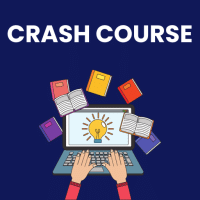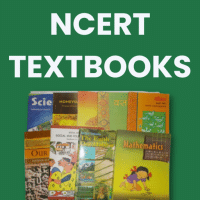B.Ed Entrance Exam > B.Ed Entrance Questions > What distinguishes Teacher-Centered Methods f...
Start Learning for Free
What distinguishes Teacher-Centered Methods from Learner-Centered Methods in the context of teaching?
- a)Student autonomy and active involvement
- b)Emphasis on critical thinking and problem-solving skills
- c)Focus on individual learning styles and preferences
- d)Teacher authority and passive reception of knowledge
Correct answer is option 'D'. Can you explain this answer?
Verified Answer
What distinguishes Teacher-Centered Methods from Learner-Centered Meth...
Teacher-Centered Methods are characterized by teacher authority and the passive reception of knowledge by students. In these methods, the teacher is the central figure who imparts information to students, who are expected to receive and assimilate this knowledge without actively engaging in the teaching process. This approach contrasts with Learner-Centered Methods, which prioritize student autonomy, active involvement, and personalized learning experiences tailored to individual needs and preferences.
View all questions of this test
Most Upvoted Answer
What distinguishes Teacher-Centered Methods from Learner-Centered Meth...
Distinction Between Teacher-Centered and Learner-Centered Methods
In the realm of education, understanding the difference between Teacher-Centered Methods and Learner-Centered Methods is fundamental for effective teaching.
Teacher Authority and Passive Reception of Knowledge
- Definition: Teacher-centered methods focus on the teacher as the primary authority figure in the classroom. The teacher is the main source of knowledge, while students play a more passive role.
- Characteristics:
- Direct Instruction: The teacher delivers content through lectures, demonstrations, or presentations.
- Limited Student Input: Student participation is often minimal, with little room for discussion or collaborative learning.
- Assessment Focus: Evaluation is primarily based on standardized testing and individual performance, emphasizing rote memorization.
- Implications: This approach can lead to a one-size-fits-all learning experience, where diverse learning styles and preferences are often overlooked.
Contrast with Learner-Centered Methods
- Definition: Learner-centered methods shift the focus from the teacher to the students, promoting active engagement and autonomy in the learning process.
- Characteristics:
- Active Participation: Students are encouraged to take charge of their learning through discussions, group work, and hands-on activities.
- Critical Thinking: Emphasis is placed on developing critical thinking and problem-solving skills.
- Personalization: Lessons are tailored to accommodate individual learning styles and preferences.
- Benefits: This approach fosters a deeper understanding of material, encourages collaboration, and helps students develop essential skills for lifelong learning.
In summary, the distinction lies in the level of student engagement and the role of the teacher, highlighting the importance of shifting from a teacher-centered to a learner-centered approach for effective educational outcomes.
In the realm of education, understanding the difference between Teacher-Centered Methods and Learner-Centered Methods is fundamental for effective teaching.
Teacher Authority and Passive Reception of Knowledge
- Definition: Teacher-centered methods focus on the teacher as the primary authority figure in the classroom. The teacher is the main source of knowledge, while students play a more passive role.
- Characteristics:
- Direct Instruction: The teacher delivers content through lectures, demonstrations, or presentations.
- Limited Student Input: Student participation is often minimal, with little room for discussion or collaborative learning.
- Assessment Focus: Evaluation is primarily based on standardized testing and individual performance, emphasizing rote memorization.
- Implications: This approach can lead to a one-size-fits-all learning experience, where diverse learning styles and preferences are often overlooked.
Contrast with Learner-Centered Methods
- Definition: Learner-centered methods shift the focus from the teacher to the students, promoting active engagement and autonomy in the learning process.
- Characteristics:
- Active Participation: Students are encouraged to take charge of their learning through discussions, group work, and hands-on activities.
- Critical Thinking: Emphasis is placed on developing critical thinking and problem-solving skills.
- Personalization: Lessons are tailored to accommodate individual learning styles and preferences.
- Benefits: This approach fosters a deeper understanding of material, encourages collaboration, and helps students develop essential skills for lifelong learning.
In summary, the distinction lies in the level of student engagement and the role of the teacher, highlighting the importance of shifting from a teacher-centered to a learner-centered approach for effective educational outcomes.

|
Explore Courses for B.Ed Entrance exam
|

|
Question Description
What distinguishes Teacher-Centered Methods from Learner-Centered Methods in the context of teaching?a)Student autonomy and active involvement b)Emphasis on critical thinking and problem-solving skills c)Focus on individual learning styles and preferences d)Teacher authority and passive reception of knowledge Correct answer is option 'D'. Can you explain this answer? for B.Ed Entrance 2025 is part of B.Ed Entrance preparation. The Question and answers have been prepared according to the B.Ed Entrance exam syllabus. Information about What distinguishes Teacher-Centered Methods from Learner-Centered Methods in the context of teaching?a)Student autonomy and active involvement b)Emphasis on critical thinking and problem-solving skills c)Focus on individual learning styles and preferences d)Teacher authority and passive reception of knowledge Correct answer is option 'D'. Can you explain this answer? covers all topics & solutions for B.Ed Entrance 2025 Exam. Find important definitions, questions, meanings, examples, exercises and tests below for What distinguishes Teacher-Centered Methods from Learner-Centered Methods in the context of teaching?a)Student autonomy and active involvement b)Emphasis on critical thinking and problem-solving skills c)Focus on individual learning styles and preferences d)Teacher authority and passive reception of knowledge Correct answer is option 'D'. Can you explain this answer?.
What distinguishes Teacher-Centered Methods from Learner-Centered Methods in the context of teaching?a)Student autonomy and active involvement b)Emphasis on critical thinking and problem-solving skills c)Focus on individual learning styles and preferences d)Teacher authority and passive reception of knowledge Correct answer is option 'D'. Can you explain this answer? for B.Ed Entrance 2025 is part of B.Ed Entrance preparation. The Question and answers have been prepared according to the B.Ed Entrance exam syllabus. Information about What distinguishes Teacher-Centered Methods from Learner-Centered Methods in the context of teaching?a)Student autonomy and active involvement b)Emphasis on critical thinking and problem-solving skills c)Focus on individual learning styles and preferences d)Teacher authority and passive reception of knowledge Correct answer is option 'D'. Can you explain this answer? covers all topics & solutions for B.Ed Entrance 2025 Exam. Find important definitions, questions, meanings, examples, exercises and tests below for What distinguishes Teacher-Centered Methods from Learner-Centered Methods in the context of teaching?a)Student autonomy and active involvement b)Emphasis on critical thinking and problem-solving skills c)Focus on individual learning styles and preferences d)Teacher authority and passive reception of knowledge Correct answer is option 'D'. Can you explain this answer?.
Solutions for What distinguishes Teacher-Centered Methods from Learner-Centered Methods in the context of teaching?a)Student autonomy and active involvement b)Emphasis on critical thinking and problem-solving skills c)Focus on individual learning styles and preferences d)Teacher authority and passive reception of knowledge Correct answer is option 'D'. Can you explain this answer? in English & in Hindi are available as part of our courses for B.Ed Entrance.
Download more important topics, notes, lectures and mock test series for B.Ed Entrance Exam by signing up for free.
Here you can find the meaning of What distinguishes Teacher-Centered Methods from Learner-Centered Methods in the context of teaching?a)Student autonomy and active involvement b)Emphasis on critical thinking and problem-solving skills c)Focus on individual learning styles and preferences d)Teacher authority and passive reception of knowledge Correct answer is option 'D'. Can you explain this answer? defined & explained in the simplest way possible. Besides giving the explanation of
What distinguishes Teacher-Centered Methods from Learner-Centered Methods in the context of teaching?a)Student autonomy and active involvement b)Emphasis on critical thinking and problem-solving skills c)Focus on individual learning styles and preferences d)Teacher authority and passive reception of knowledge Correct answer is option 'D'. Can you explain this answer?, a detailed solution for What distinguishes Teacher-Centered Methods from Learner-Centered Methods in the context of teaching?a)Student autonomy and active involvement b)Emphasis on critical thinking and problem-solving skills c)Focus on individual learning styles and preferences d)Teacher authority and passive reception of knowledge Correct answer is option 'D'. Can you explain this answer? has been provided alongside types of What distinguishes Teacher-Centered Methods from Learner-Centered Methods in the context of teaching?a)Student autonomy and active involvement b)Emphasis on critical thinking and problem-solving skills c)Focus on individual learning styles and preferences d)Teacher authority and passive reception of knowledge Correct answer is option 'D'. Can you explain this answer? theory, EduRev gives you an
ample number of questions to practice What distinguishes Teacher-Centered Methods from Learner-Centered Methods in the context of teaching?a)Student autonomy and active involvement b)Emphasis on critical thinking and problem-solving skills c)Focus on individual learning styles and preferences d)Teacher authority and passive reception of knowledge Correct answer is option 'D'. Can you explain this answer? tests, examples and also practice B.Ed Entrance tests.

|
Explore Courses for B.Ed Entrance exam
|

|
Signup for Free!
Signup to see your scores go up within 7 days! Learn & Practice with 1000+ FREE Notes, Videos & Tests.























